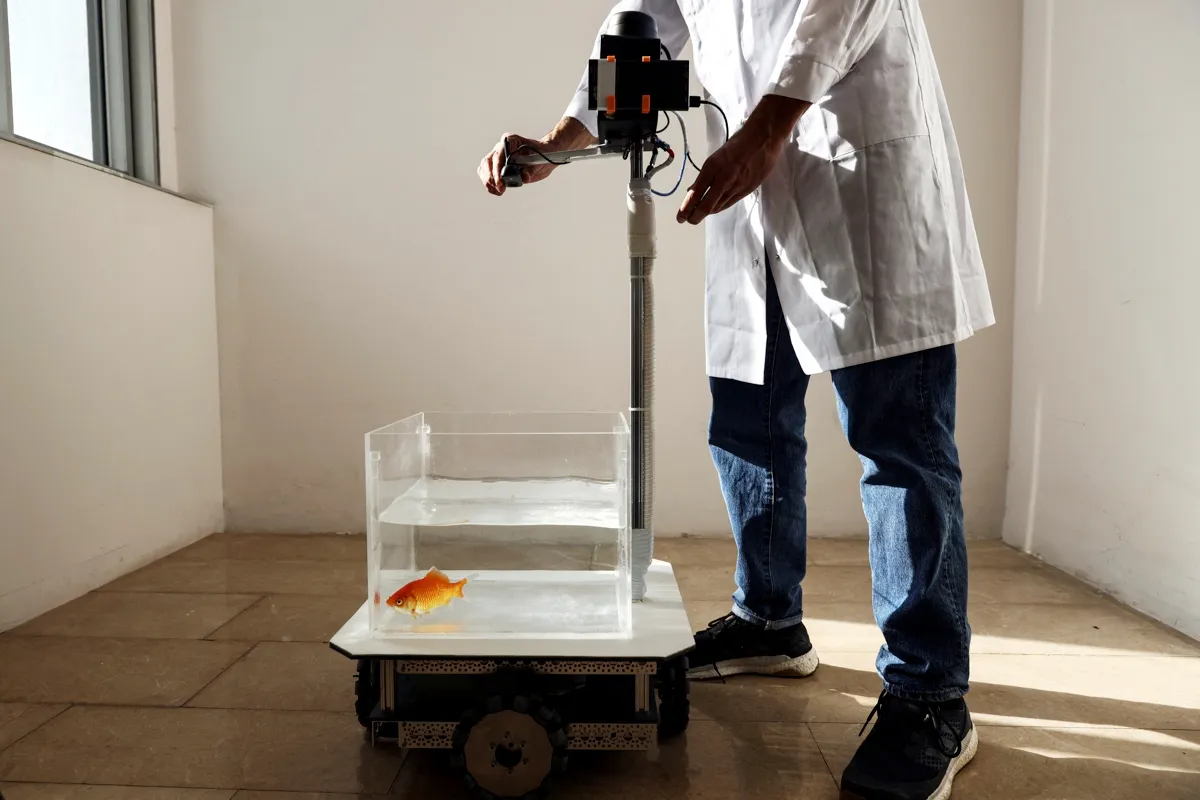As it turns out, goldfish can take to driving a car like a duck to water.
A team at Ben-Gurion University taught the fish to move its own tank – on what the team termed a ‘Fish Operated Vehicle’ or FOV – towards a target, in return for a treat. Aside from making fairground games a lot more difficult, the research has implications for humans’ futures among the stars, says Dr Ohad Ben-Shahar, professor of computer science and one of the authors of the study.

Ben-Shahar is interested in how we navigate through a space, and what that space looks like in our minds. There must be some mapping happening in our minds, says Ben-Shahar, that links our movements and body parts to changes in space. This is how we know how far to extend our arm to reach for, or navigate toward, our cup of tea, for example, without extending it too far and knocking it over. "How space is represented in the brain is the mechanism by which navigational decisions are made," explains Ben-Shahar.
“It’s indisputable that space should be represented somehow in the animal brain. But one of the fundamental questions that arises, is does this representation depend on the environment itself?”
In other words, does the brain's maps differ between land and sea, or is it universal?
“One hypothesis was that if the way we represent space is dependent on environment, then it must affect navigational decisions.
“If we see that navigational decisions are not impacted very heavily [by the change in environment], it's an indication that the representatives of space [in the brain] did not change that much. That it doesn't depend on the environment. It's almost universal.”
So, the team tried to test this by taking an animal from its innate environment and placing it somewhere else.
“The more different the environment, the stronger the argument,” says Ben-Shahar. “And what could be more different than taking a fish from its marine environment and putting it in a terrestrial environment?”
To test the fish’s navigation, a camera was positioned above its tank, and the fish was taught to ‘drive’ by moving its body around the tank. The camera would pick up the fish’s position and pose, which then moved the FOV in a particular direction.
“So, if the fish saw a target, it should sort of touch the wall of the tank facing that direction, and then we could guide the wheels and move it that way,” says Ben-Shahar.
It took just 10 days for the fish to learn to drive this way, which could’ve been less had it not been for the goldfish’s greediness. “We had to practise every other day because the fish cannot get too much food. Apparently, goldfish would eat themselves to death. They eat non-stop.”
The experience for the goldfish was likely not dissimilar to humans scuba diving. “It's slightly different. But everybody who dives knows that perception changes when you go deep under water, and that's purely for physical and optical reasons. It’s the same for the fish. Once we took it out of its marine environment and put it in a complex terrestrial arena, then its perception changes. Now optics go through air and through the glass and then water, and everything seemed distorted.”
According to Ben-Shahar, the fish handled this “pretty well”. “Just like divers, who know that they observe the world differently, in the end, they are able to manage navigation in marine environment. The fish did well in the end.”
In the long term, the research could see applications for humans in space, says Ben-Shahar. “We definitely shoot for that. Maybe we can get important insights that can be useful for astronauts. Who knows?”
“But as a scientist, I must tell you, we of course need to conduct more research and do it with other species as well as other environments. And indeed, this is part of our ongoing research.”
Read more about vision:
